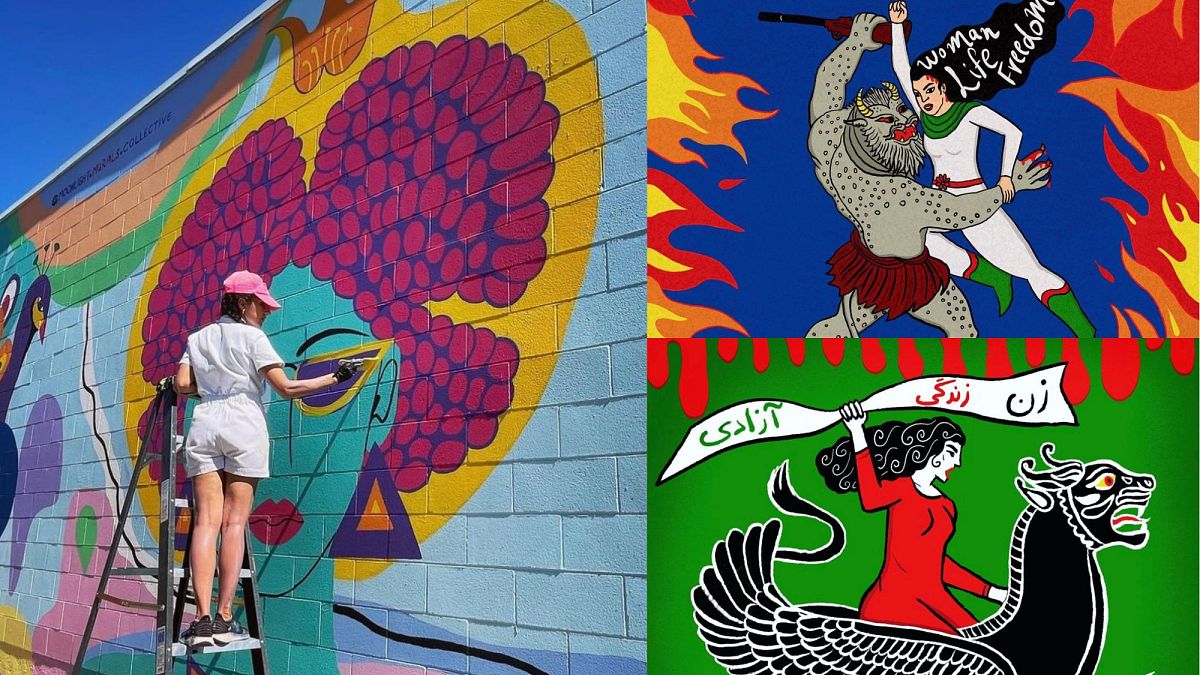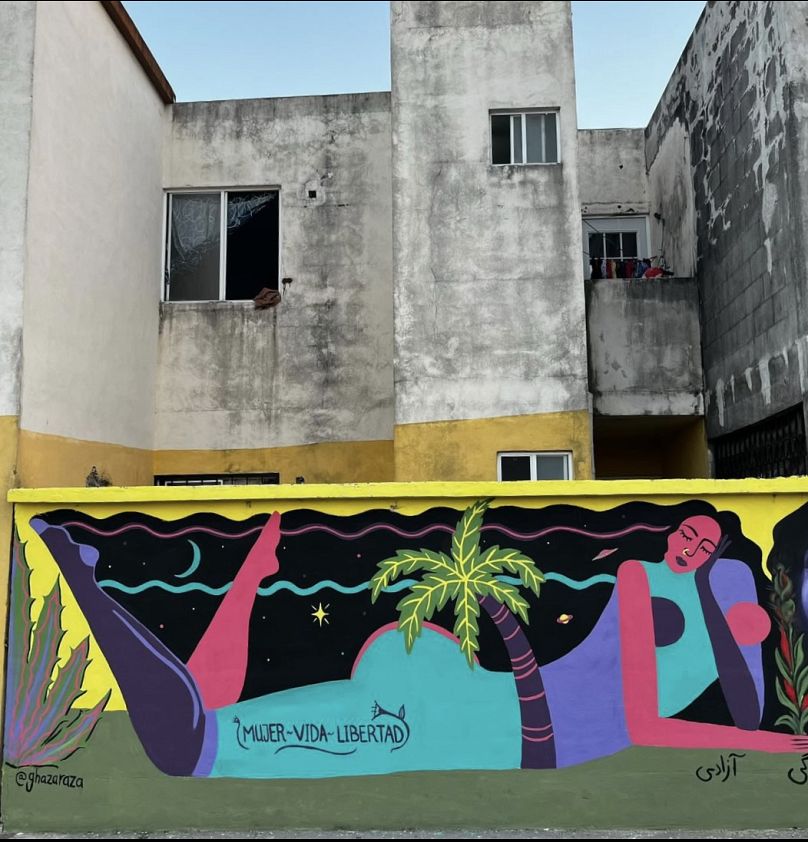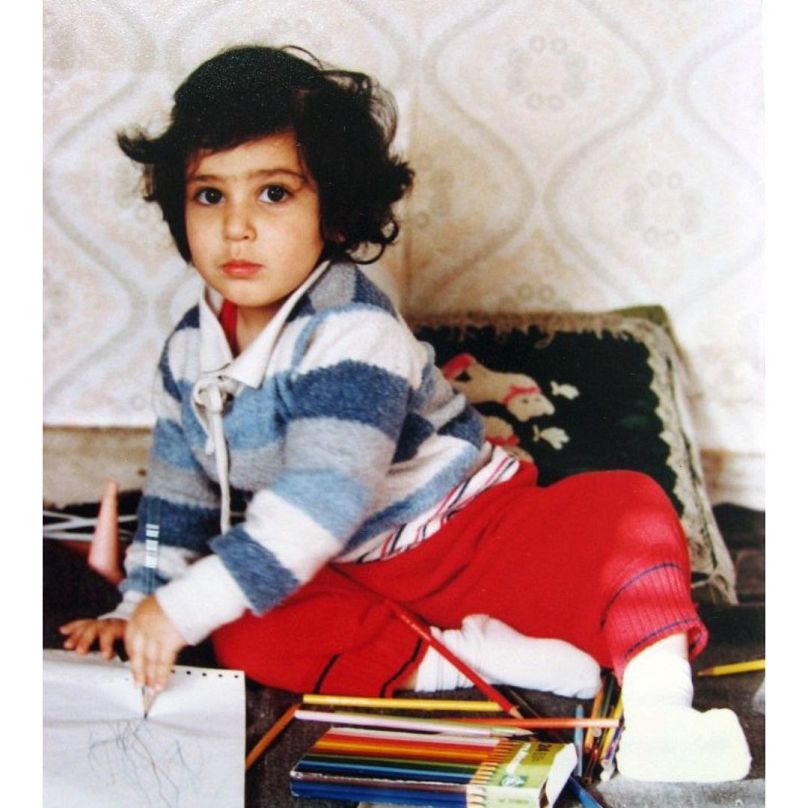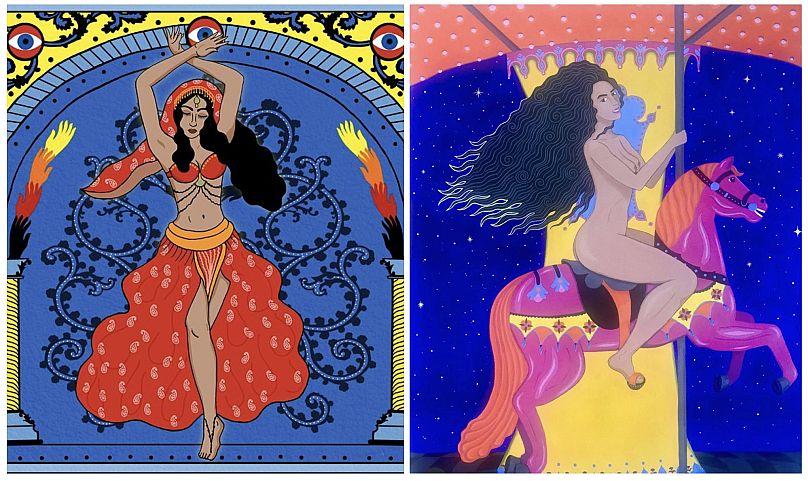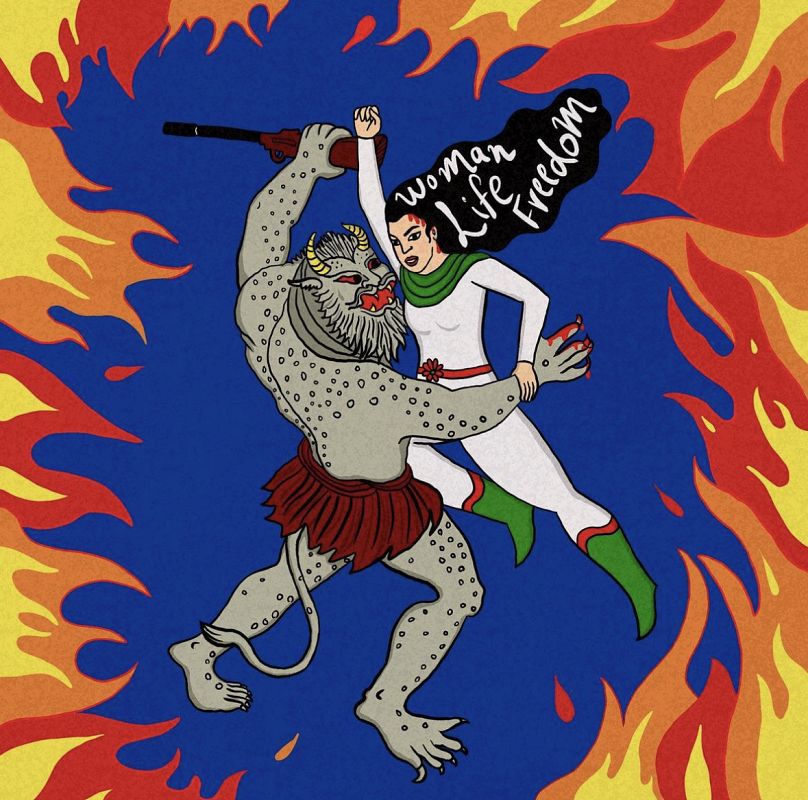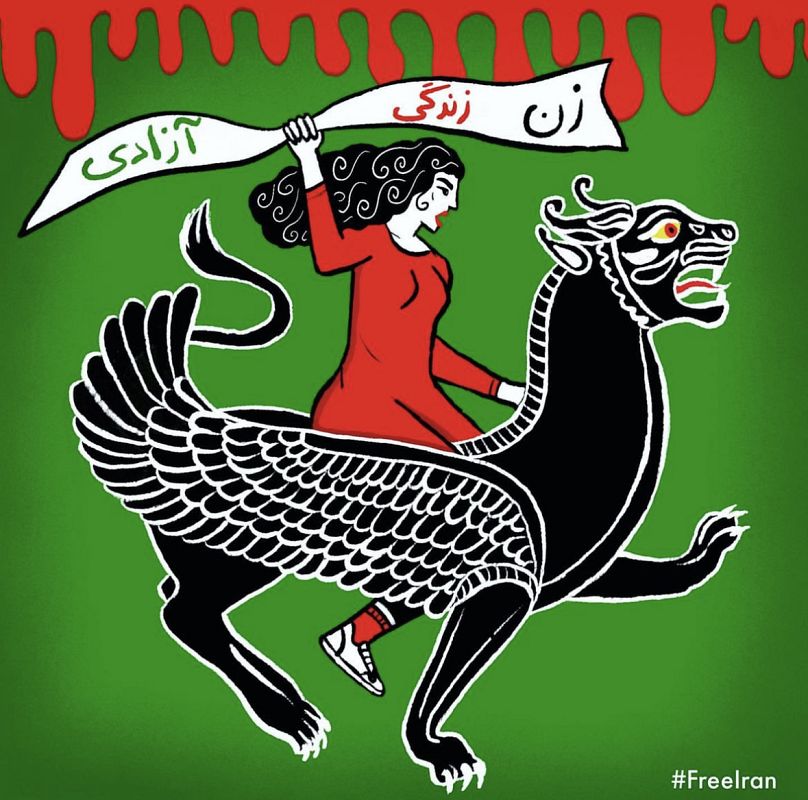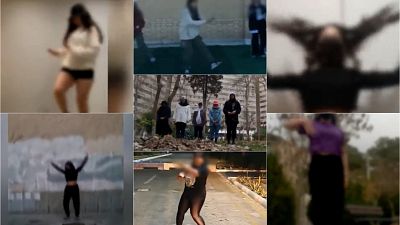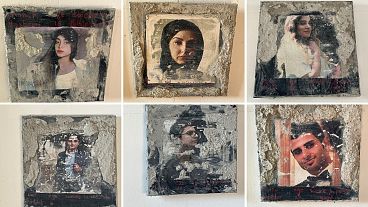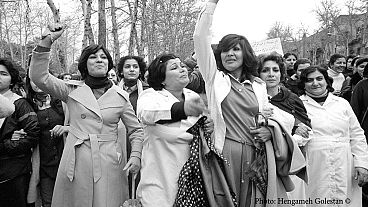As the "Women, Life, Freedom" movement in Iran continues amid the fierce backlash from the government, Euronews Culture spoke to Ghazaleh Rastgar, a Persian multidisciplinary artist who's spreading her message around the globe painting murals in support of the revolution.
Half a year has passed since the murder of Mahsa Amini at the hands of the religious morality police in Iran, but the “Women, Life, Freedom” revolution still continues despite the Iranian government's severe crackdown.
Amidst this, Ghazaleh Rastgar, an Iranian ex-pat, and multidisciplinary artist has been going around the globe painting murals and designing posters in support of the revolution.
“The main message in my art has always been respect for life, respect for women, and respect for nature,” Rastgar told Euronews Culture in a remote interview from Mexico City where painting murals for Women’s History Month in March.
Her art – ranging from graphic illustrations to murals – celebrates female strength, spirituality, and sexuality. She says women and their issues are a common theme in her art due to the early years of her life spent in Iran.
“I grew up in Iran until I was 14 so I got to experience how the suppressive government affected my life directly,” she said.
Rastgar moved to Canada as a teenager where she says she had the “freedom” to unlearn many of the things she had been indoctrinated with during her childhood in Iran.
“I didn't even realize how it had affected my psyche. After many years, I realized that a lot of my thoughts and a lot of my issues with myself are a product of suppression and patriarchy.”
Self-love and self-expression through art
Rastgar recalls how as a child she used to paint with her aunt (also an artist).
“We (artists) make art because we have to. It’s part of our psyche. We like to think in a visual way so it's like changing your ideas into metaphors that are visually understandable,” she said.
A graduate of Ontario College of Art and Design, Rastgar worked as a graphic and web designer in the early years of her career before realizing she wants to be a fine artist.
“A lot of my art, in the beginning, was just about the female body. I started making figures – female figures in different positions just loving their lives, loving their bodies, loving their hair,” she said.
Death of Mahsa Amini
On 16 September 2022, a 22-year-old Kurdish woman in Iran, Mahsa Amini, died in a hospital in Tehran – apparently from a heart attack.
Three days prior, she had been arrested and detained by the Guidance Patrol, Iran's religious morality police, for not wearing her hijab properly as per the country's mandatory dress code for women which has been part of the law since the Iranian Revolution of 1979.
According to her family, Amini had been tortured while in police custody as witnessed and reported by fellow co-detainees and confirmed by the bruises on her body.
The Iranian authorities denied these claims but arrested the journalist, Niloofer Hamedi, who broke the news around the time of Amini's death. This news sparked nationwide protests in the days (and months) to follow causing the government to crackdown on protesters and implement a widespread internet blackout.
Within a week, the hashtag #MahsaAmini broke Twitter records with 80 million tweets, while her name as well as the Kurdish feminist slogan "Women, Life, Freedom" became a rallying cry for demonstrators on the ground.
To date, more than 500 protestors have been killed and around 20,000 arrested including the journalist Niloofer Hamedi who remains in police custody, according to the Iran Human Rights group.
“When I heard about Mahsa Amini's death – or rather, murder – I was very very angry. It brought back a lot of suppressed emotions of people telling you how to dress up and questioning your intelligence because your hair may be showing,” Rastgar said.
She decided to channel her anger toward the Iranian regime and her “guilt” of not being able to do enough as an ex-pat into her artwork.
Using Iranian iconography
Rastgar’s art blends Iranian iconography and Persian folklore into modern designs inspired by contemporary events.
Last month, one of Rastgar’s posters for the Iranian revolution that she designed during Halloween was displayed in museums in Paris. Drawing on Iranian iconography, it depicts a standoff between a white-colored monster and a female warrior with the words “women, life, freedom” embroiled in her flowy hair.
“This monster is called a ‘Div’ (demon) in Farsi (Persian) and is based on stories from the Shahnameh,” she told Euronews Culture. Considered the “national epic” of Iran, the Shahnameh is a collection of pre-Islamic Persian folkloric stories written by the legendary Iranian writer, Ferdousi, in the 14th century.
“In these stories, the hero is always a man, but I wanted to depict a female hero,” said Rastgar. The monster is also symbolic of the oppressive Iranian regime while the female soldier is representative of all the women protesting resiliently.
“This whole time we thought the Div-e-Sefid (white demon) was an imaginary being and the hero was a man. Turns out the evil force is greedy old men and the heroes are young women,” the caption for her poster reads.
In another illustration, Rastgar depicted a woman riding a Khumar which she described as a “Persian griffin, half-bird, half-tiger” against a green background – symbolic of revolutions in Iran such as the Green Wave of Iran 2009. The woman holds a banner that reads “Zan, Zindagi, Azaadi” (women, life, freedom).
Another common theme in her art has been depicting women in the traditional role of men. In another design – a mural she painted for a Persian restaurant in Canada – she drew female soldiers at the Persepolis, the capital of the ancient Persian empire founded in 518 BC and later destroyed by Alexander the Great in 330 BC.
“The soldiers were always shown to be men but in my mural, I painted a female soldier,” she said.
Hope for the Future
With the revolution in Iran getting international coverage, Rastgar says she is very grateful for the international outcry amplifying the voices of protestors in Iran but a lot more needs to be done by the international community.
“In Canada, all the protests that I have gone to are spearheaded by Iranians. It’s great that there have been protests in so many countries but a common theme almost everywhere has been a large Iranian expat population,” she said.
Although most of her family and friends have moved out of Iran over the years – save for her father who lives in Shirazi where the initial protests were quickly uprooted – the country still holds a special place in her heart.
In the foreseeable future though, she does not see herself settling in Iran.
“I think if I was in Iran, I’d probably be dead by now or in jail because I'm just as angry as the people on the streets,” she said.
Rastgar hopes she can continue using her art to spread awareness and urge the international community to stand in solidarity with Iran.
“I would never go back to Iran to live even if things change just because I think it takes many many decades for a place to come back to a normal life, but I really hope there's a future for Iran – a happy one.”
